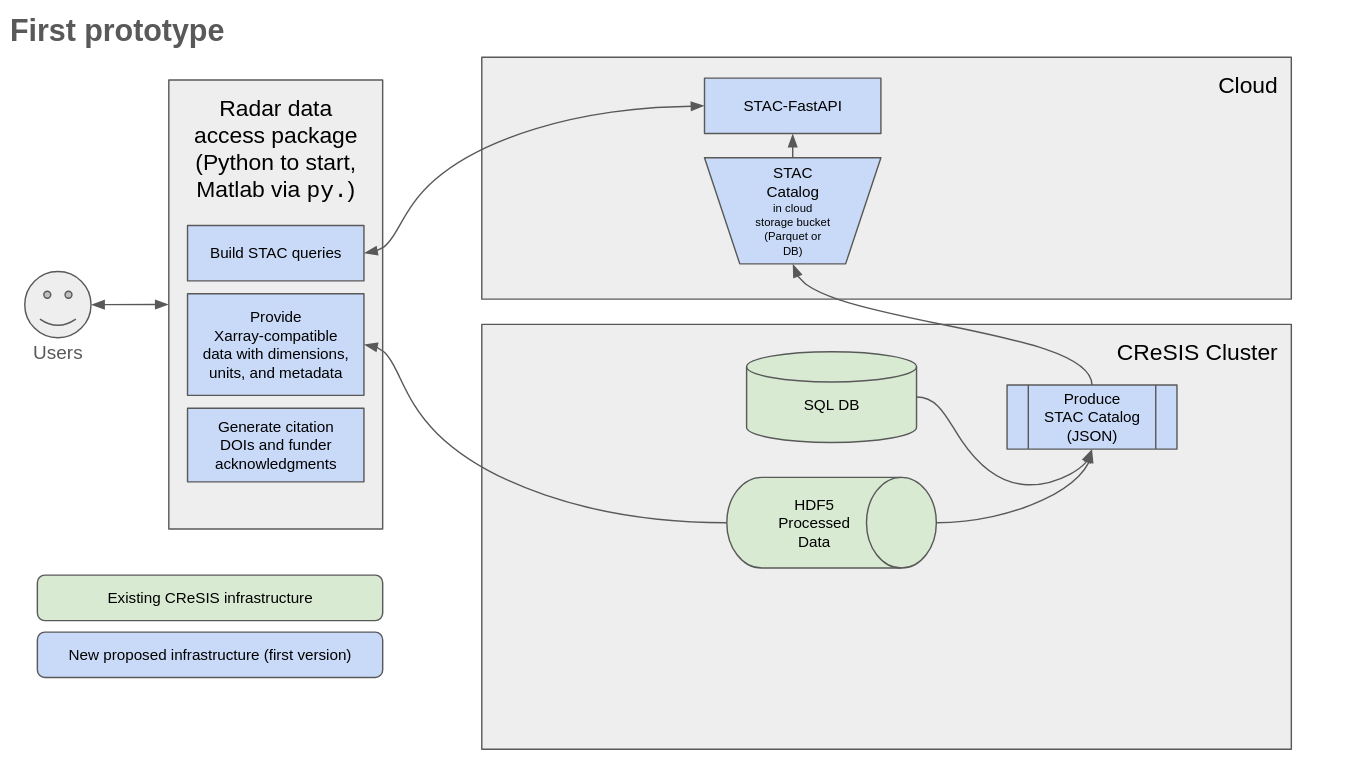Overview¶
xOPR is a Python library designed to make accessing Open Polar Radar’s data archives easy, scalable, and reproducible.
xOPR offers access to most of the OPR data catalog, but not absolutely every line. Check out our availability maps for details.
Installing xOPR¶
To install xOPR, use:
pip install xoprOr, using uv (our recommendation!):
uv add xoprGetting Started¶
Minimal example of loading and plotting a single frame of radar data:
import numpy as np
import xopr
opr = xopr.OPRConnection()
stac_items = opr.query_frames(collections=["2022_Antarctica_BaslerMKB"], segment_paths=["20221228_01"], max_items=1)
frames = opr.load_frames(stac_items)
(10*np.log10(frames[0].Data)).plot.imshow(x='slow_time', y='twtt', cmap='gray', yincrease=False)To learn more, we recommend looking through the notebooks on the left side navigation.
Design¶
For details on the initial design planning of xopr, please see this OPR wiki page.
For current design and terminology, see the design notes page.

xOPR acts as an interface to OPR data. It has two primary roles: helping create queries to the OPR STAC catalog to find data and returning radar data in the form of an Xarray Dataset.